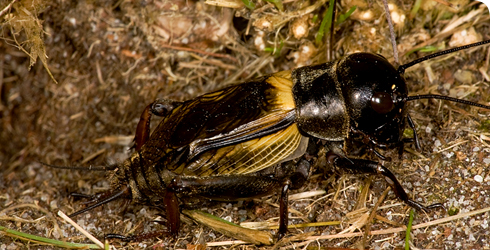Gryllus campestris (field cricket)
The field cricket, Gryllus campestris, is a large, shiny black cricket with a distinctively large head, particularly in the male.
The field cricket occurs in:
- central and southern Europe
- western Asia
- North Africa
It is one of the rarest insects in the British Isles, restricted to southern England, and was probably never common here.
In 1987, it was one of the three Orthoptera recognised in the British Red Data Book as endangered and is now the subject of a Species Recovery Programme.
Species detail
-

Taxonomy
Learn about the appearance of the field cricket and how it can be distinguished from its close relative, the southern field cricket.
-

Habitat and distribution
By 1988 the field cricket survived at just 1 of the original sites it was known for in the UK. However, the Natural England Species Recovery Programme has helped save the species from extinction. Learn more about the habitat requirements and distribution of Gryllus campestris.
-

Life history and behaviour
Male field crickets sing to attract females and perform a courtship song before mating. If a female enters his burrow, the male will sometimes try to keep her there for future mating, a potentially risky move as she may severely maul him to escape. Discover more about the interesting behaviour of field crickets.
-

Conservation
Learn more about the factors necessary for the survival of Gryllus campestris and past and current conservation efforts to help the species.
-

References
Get reference material for Gryllus campestris.
Images
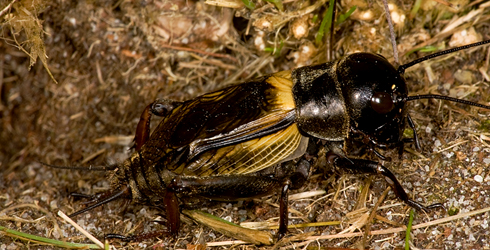
Adult male field cricket. Rare in Britain, these insects can be recognised by their distinctively large head and short wings. © Mike Edwards
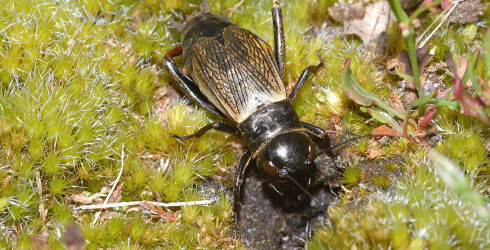
Male field crickets can grow to 23mm in length. © Ted Benton
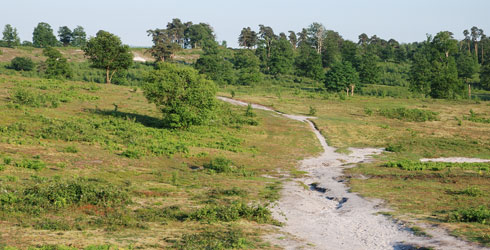
By 1988 the field cricket survived at only 1 original site in the Coates Castle area of West Sussex. © Ted Benton
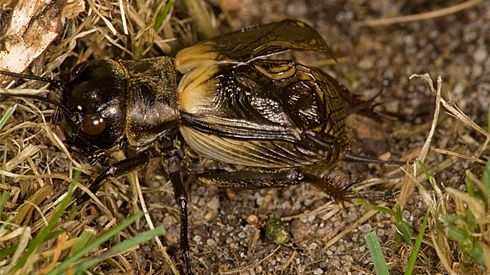
Adult male field cricket with wings raised in their singing position © Mike Edwards

Adult male field cricket singing to a female at the entrance to his burrow © Ted Benton

An adult male field cricket outside a burrow where the end of a female cricket's abdomen is just visible. © Ted Benton

Female field cricket © Ted Benton
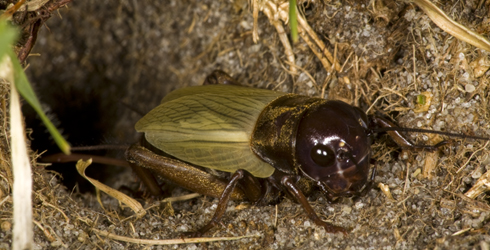
Recently moulted adult male field cricket. Newly moulted crickets are white and gradually darken as the cuticle hardens, here the wings are still pale and the rest of the body still reddish brown. © Mike Edwards
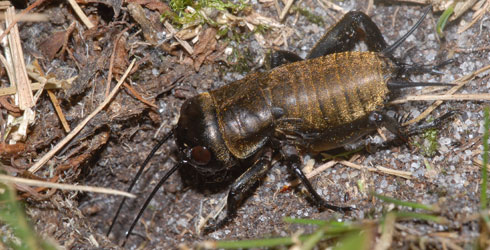
A younger (penultimate) Gyrllus campestris nymph with small wing pads. Gryllus campestris nymphs emerge from burrows where they have over-wintered in March and become adults in the next couple of months. © Ted Benton
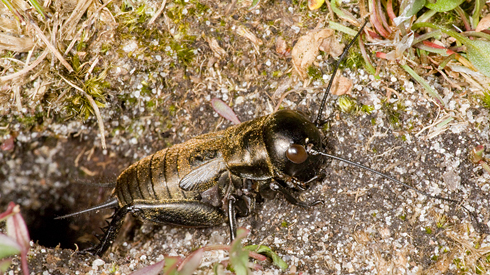
Last instar Gryllus campestris nymph with long wing pads © Mike Edwards
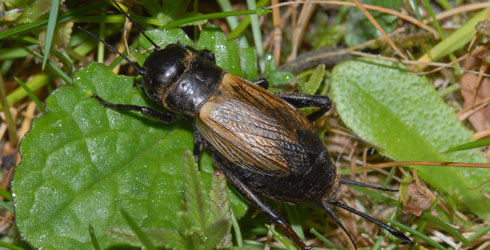
Adult female field cricket. The species Gryllus campestris is known to be dependant on appropriate vegetation structure to survive. The crickets need short grass. Overgrowth of bracken, bramble and young trees is ideally removed by cattle grazing. © Ted Benton
Video
Watch a video of a male field cricket in his natural habitat attracting a female to mate with by singing in front of his burrow.
When the female cricket arrives she examines the burrow before walking to the male. He approaches her tail-first and she then climbs on his back and they mate. (Video © Ted Benton)
You need to download the latest Flash Player to view this video. Visit the website to download the Flash Player
Author
Judith Marshall
Scientific Associate, Entomology Department
Glossary
Orthoptera
Taxonomic group that includes grasshoppers, crickets and bush-crickets.
